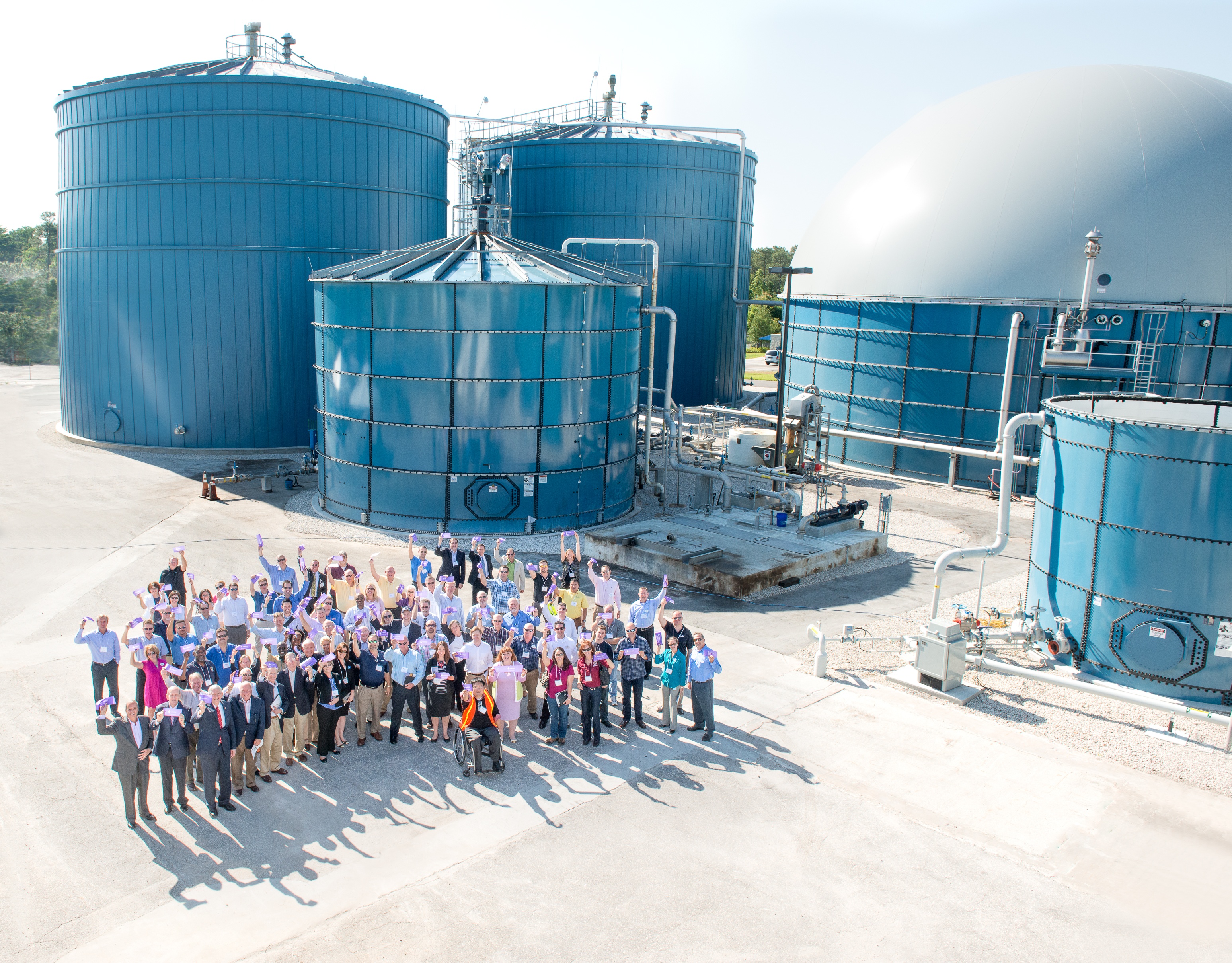This post is one in a series featuring the complete slate of advanced energy technologies outlined in the report This Is Advanced Energy.

Image courtesy of Harvest Power. Harvest Power is a member of AEE's Business Council. Learn more about membership here.
Anaerobic digestion (AD) is a process by which organic materials, such as livestock manure, food scraps, and municipal or industrial wastewater, are broken down by microorganisms in the absence of oxygen. The product of AD is biogas, a gas mixture comprised primarily of methane and carbon dioxide. AD is one of several options for converting organic matter into useful energy. Different digester types can be used, from simple covered lagoons at animal farms to more sophisticated above-ground steel or concrete tanks. Today, most biogas is burned to generate electricity on-site, but it can also be purified and made into a pipeline-quality substitute for natural gas, including compressed natural gas (CNG) for vehicles. Fats, oils, and grease can be added to manure or wastewater (co-digestion) to enhance energy production. AD is often used in conjunction with combined heat and power for efficient electricity and heat generation, such as on dairy farms and at wastewater treatment plants.
In the United States, AD is most commonly used at municipal wastewater treatment facilities but is also found on farms, at industrial sites (e.g., food and beverage processing plants), and other locations. As of early 2015, there were over 240 anaerobic digesters operating at livestock facilities across the country, with much potential remaining for expanding the use of AD on commercial farms. A third-generation swine farm in Ashley, Ohio, uses an anaerobic digester installed by Quasar Energy Group to produce electricity, heat, and compressed natural gas (CNG) for on-site use, with some electricity also being sold to the grid. Interest in using AD for food waste is also on the rise, especially as states look to reduce the amount of municipal waste going to landfills. For example, in Orlando, Florida, food waste sourced primarily from the Walt Disney World Resort is fed through an anaerobic digester owned and operated by Harvest Power, producing enough electricity to meet the needs of 16,000 homes.
AD facilities improve waste management while also producing fuel for electricity or other uses and providing new revenue streams. For example, many farmers who deploy AD are able to reduce manure odors while meeting their electricity and heating demands, avoiding the need to purchase electricity or fuels. In addition, the residual biosolids from AD make excellent fertilizer, which can be used onsite or sold. AD can also improve water quality by preventing disease-causing bacteria from entering the groundwater. Use of AD can make wastewater treatment facilities energy neutral or even energy positive, translating to huge cost savings for municipalities: While wastewater treatment accounts for just 0.8% of national electricity use, water treatment can amount to about 35% of total energy spending for municipal governments. Municipalities also benefit from reduced pipeclogging fats, oils, and grease in their waste streams.
